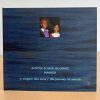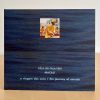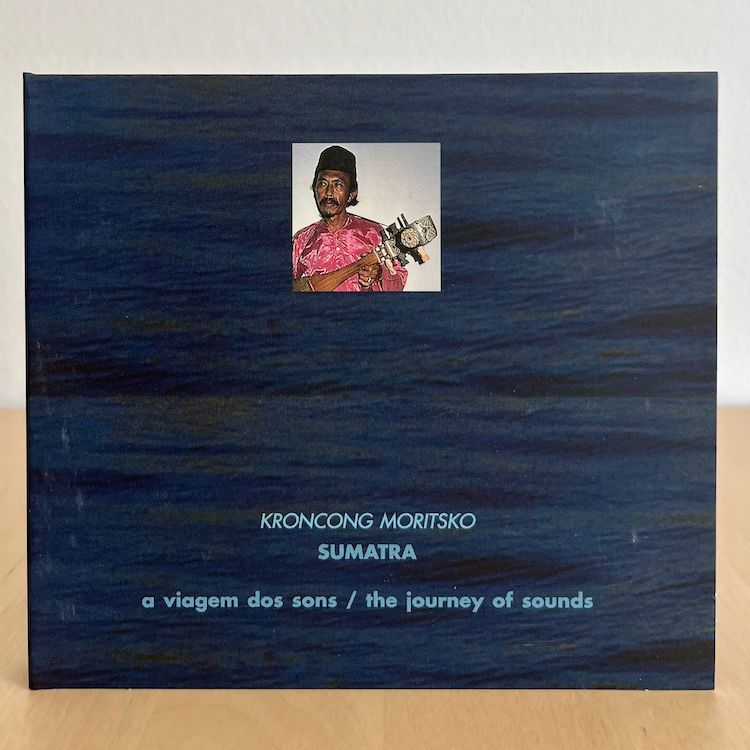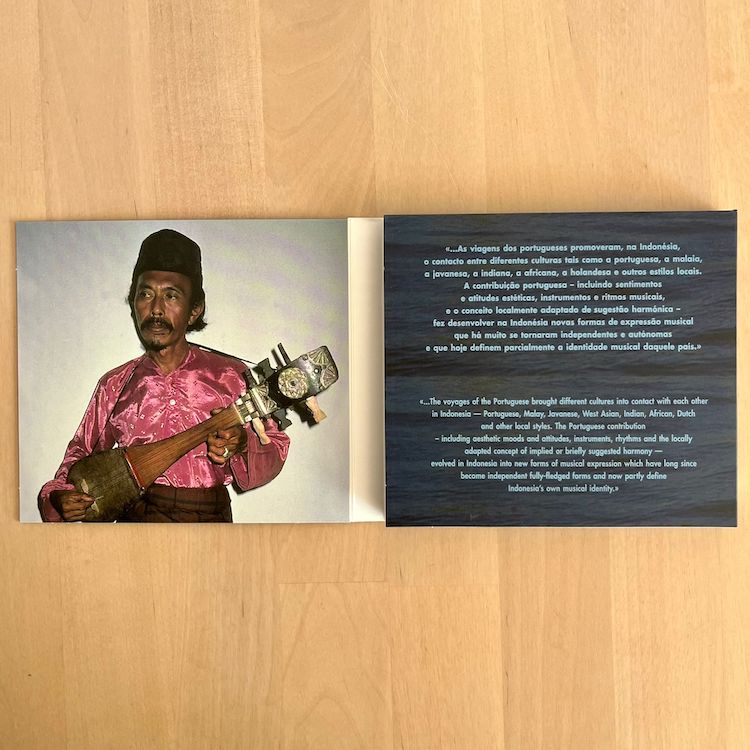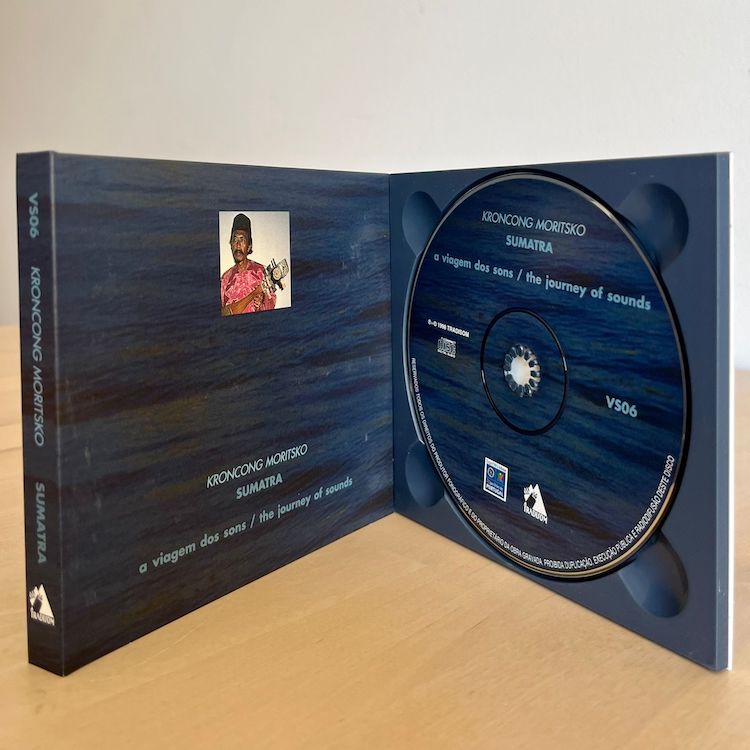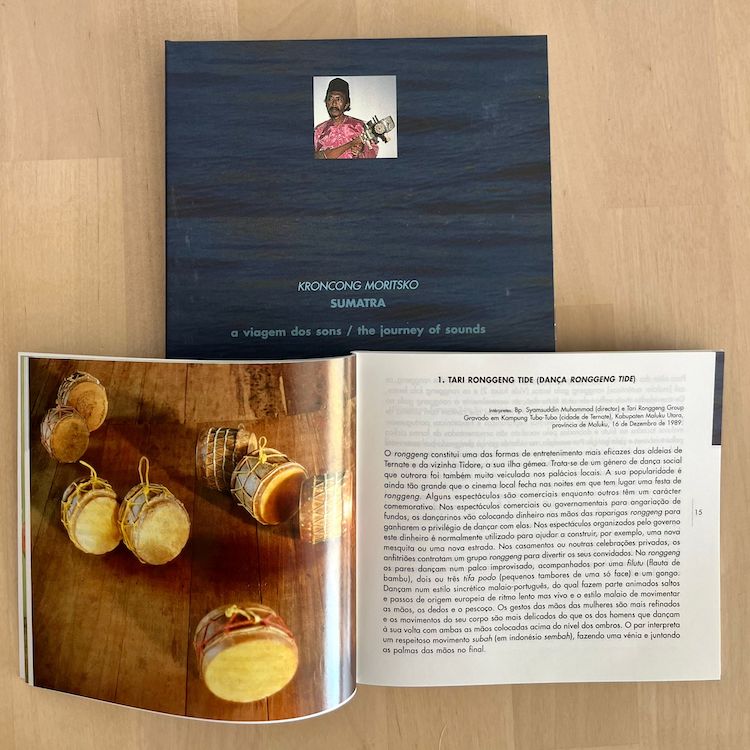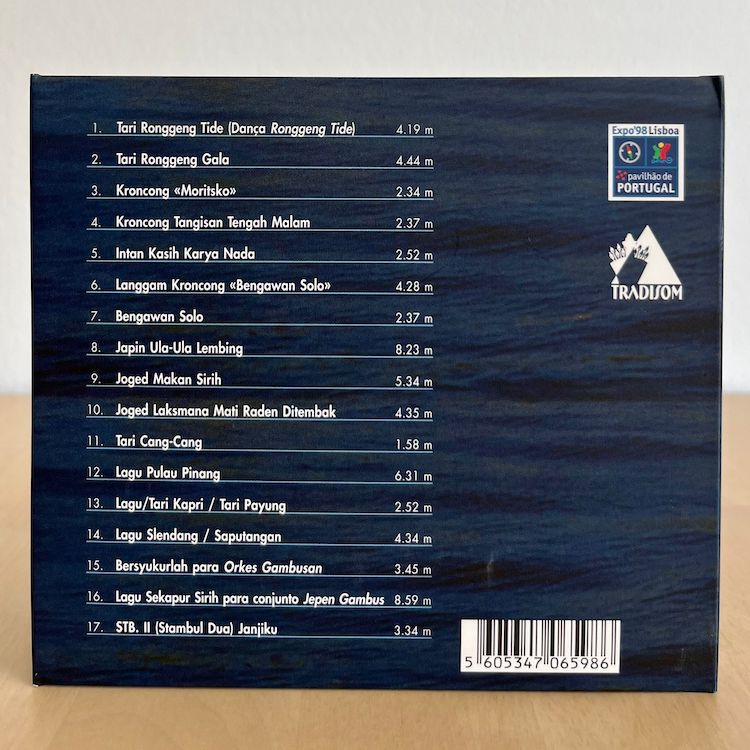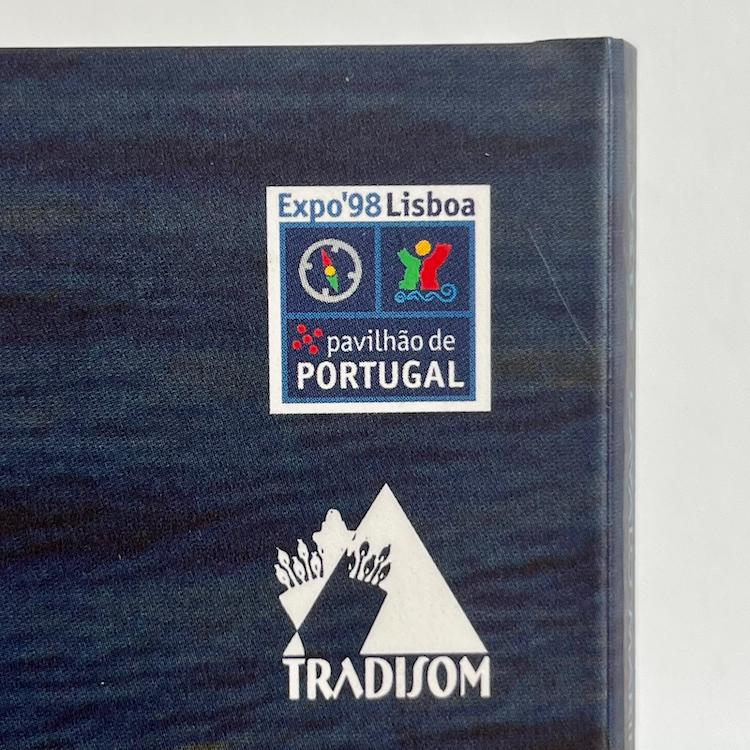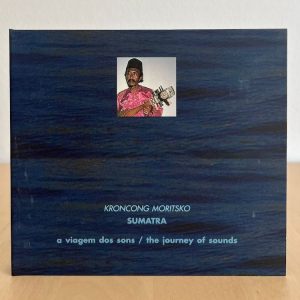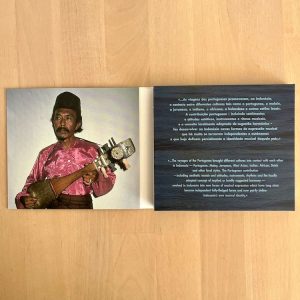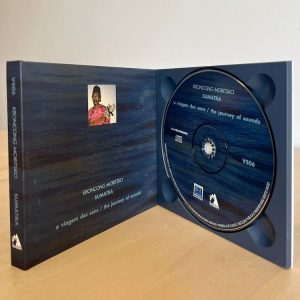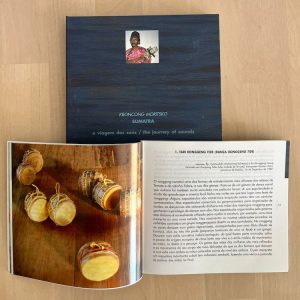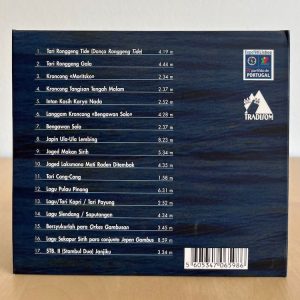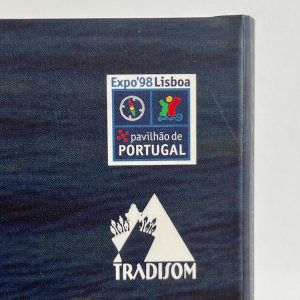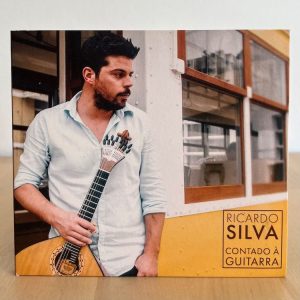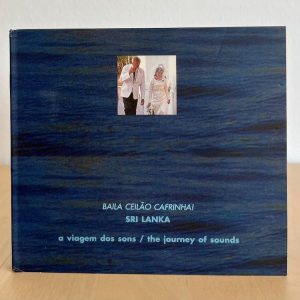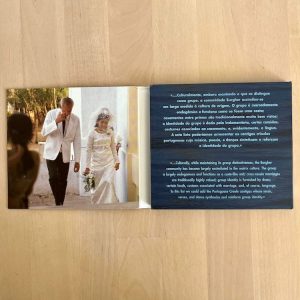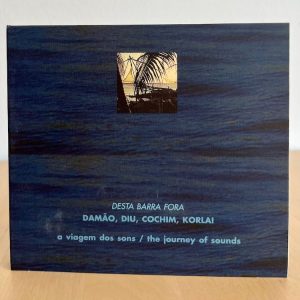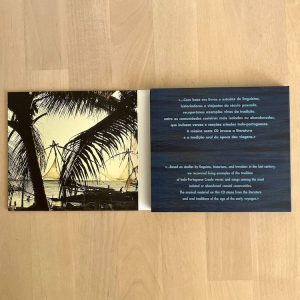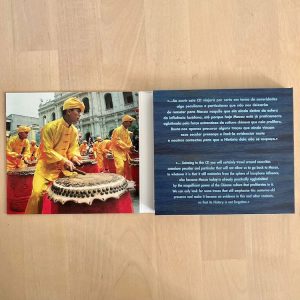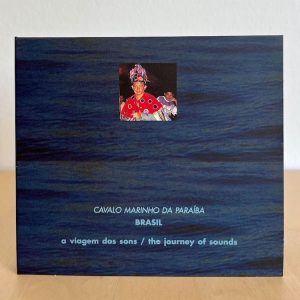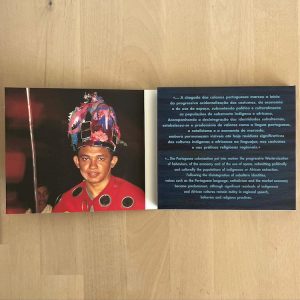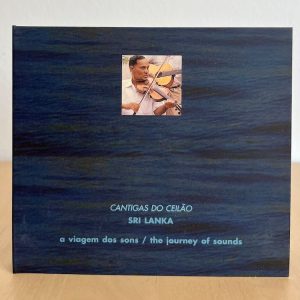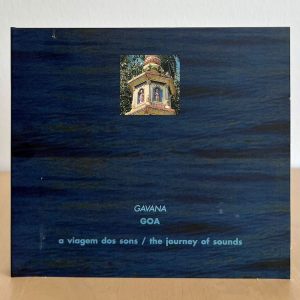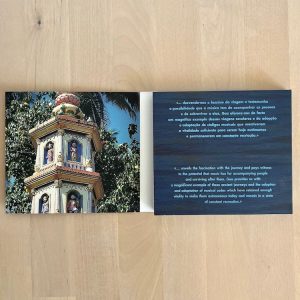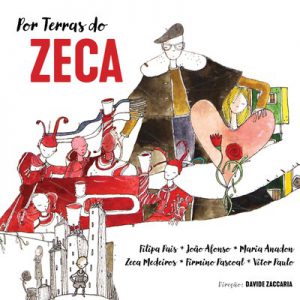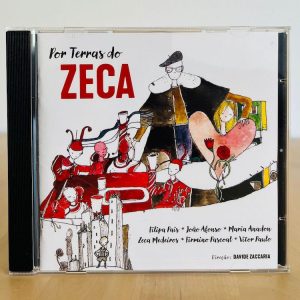A Viagem dos Sons – Kroncong Moritsko
5,00€ – 15,00€
[zoomsounds id=”kroncong-moritsko”]
Deluxe digipack edition with bilingual booklet (written in Portuguese and English), featuring 90 coloured pages.
Ever since the 16th century Portuguese are known by their adventurous navigators who furrowed the seas to such distant places as Southeast Asia or America, establishing merchant empires and subjugating small local populations in the process. Looking to monopolize the lucrative spice commerce of the Eastern Indies, the Portuguese started by establishing their military presence in the Spice Islands of Molucca, right in the 15th century (see map). Soon the Spanish, the English and the Dutch joined in the race for the supremacy in the commerce of nutmeg, clove and sandalwood in the Molucca Islands. However the Portuguese were the first to implement a fortress and commercial network in the region, particularly in Ternate’s and Tidore’s Islands of Spices, in the North of the Molluca Islands, but also in Ambon and Ceram, in Central Molucca, in Flores and in Timor, in the Southeast, and in Muar (Malaysian Peninsula), Tugu (now Jakarta), Makassar (now Ujung Pandang), in Southern Sulawesi and in East Timor. As this musical selection demonstrates, music travels the same paths walked by those who interpret it or perform it. We can even speak of sound travelling and drawn their itineraries through oceans and continents. This record in particular concerns not only the sounds of the Portuguese travellers but also the sounds of the African and Southern Eastern slaves’ traditions, that travelled along with the Portuguese. As said before, some slaves converted to Christianity, becoming known as Portugis or black Portuguese. By getting in touch with different traditions, contexts and people, these sounds were absorbed and melted through processes that generated new and independent forms of musical expressions that came to define different cultural identities. This is the context for some musical and stylistic genres such as kroncong and kapri and some dances like zapin, accompanied by joget music. However the apparent cultural unity among the several Malay speaking regions of the Asian Southeast is based not only on the cultural contact with the Portuguese but also on the contact with Indians and Muslims of Western Asia. Thus some musical genres that are believed to have originated from a syncretism between the Malaysian and Portuguese cultures feature elemens of a Malaysian-Arabian originn, such as orkes gambus or gambusan (featuring instruments of arabian origin, such as the gambus lute, see track 15), used to accompany the Malaysian dances such as zapin.
Regardless of the way the Portuguese or Arabian elements introduced themselves in the Malaysian universe, some musical genres, such as kapri, ronggeng, orkes gambus, stambul, bangsawan and some kroncong songs and groups are indeed a synthesis of Portuguese and Perso-Arab or Western Asian elements. These days this music is not described by their interpreters or audiences as being Portuguese, for the Portuguese influence in Indonesia dissipated in the beginning of the colonial era. Instead this music is defined as Malaysian Music, which makes it important to understand the meaning of this expression.
| Weight | N/A |
|---|---|
| FORMATO | CD, MP3 |
Related products
Discos
Discos
Discos



